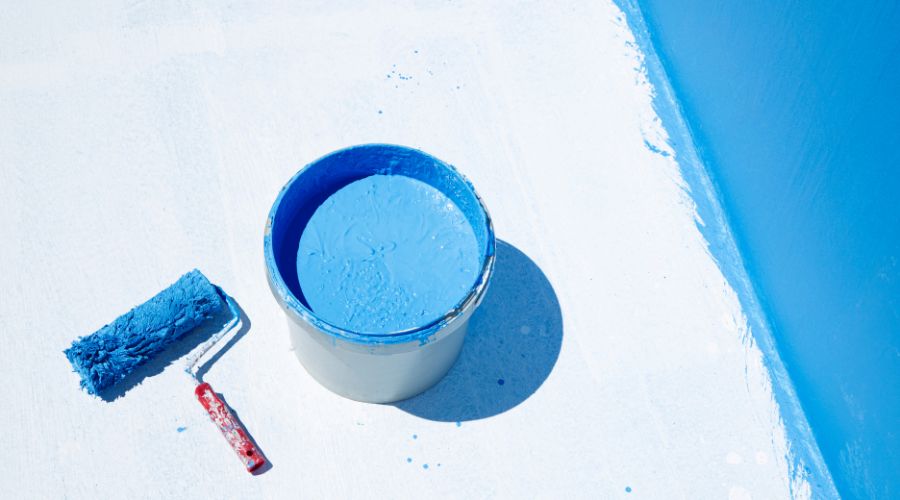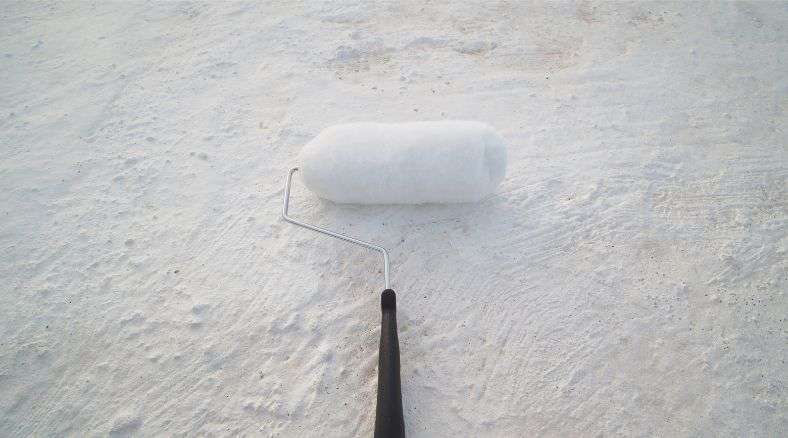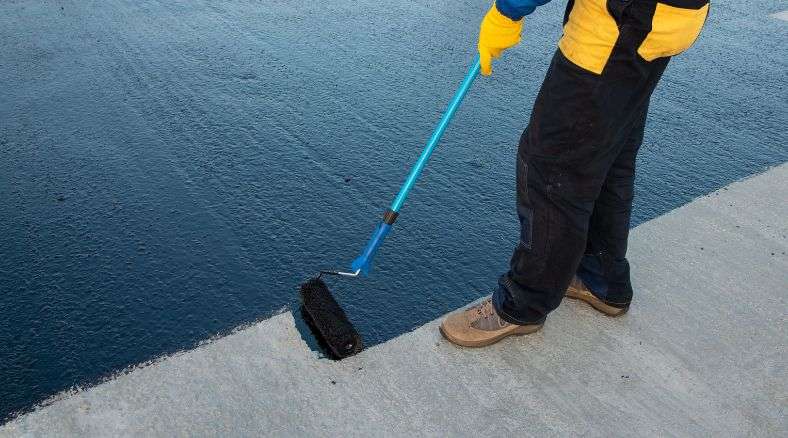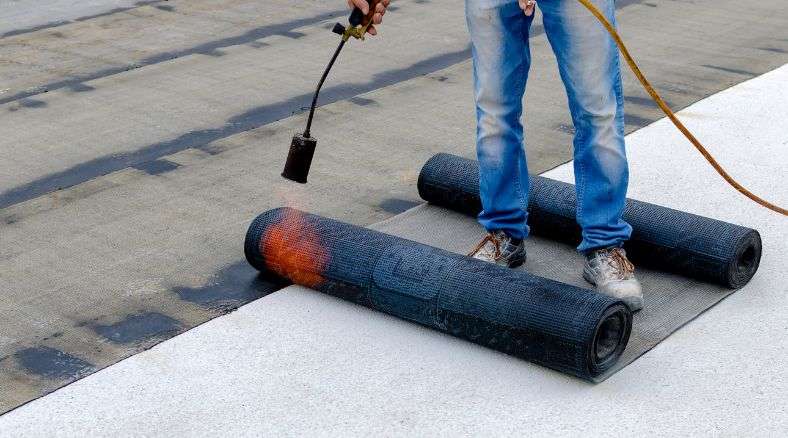How to Apply Waterproof Concrete in the UAE [Step-by-Step Guide]

UAE is a country known for its magnificent architecture. Though scarce, averaging only 100 millimeters annually, UAE's sporadic rainfalls can be intense, damaging buildings and infrastructure. Waterproofing technology has advanced over the years, and the good thing is now you can get all the waterproofing materials and tools on one platform. You need to know how to apply waterproof concrete.
How to Apply Waterproof Concrete Concrete?
Let’s come straight to the point. Do you want to know how to apply waterproof concrete, ensuring your projects stay strong for years? Here’s a breakdown of the process in four easy-to-follow steps:
Step 1: Common Preparation
Step 2: Preparing the waterproof concrete
Step 3: Applying the Waterproofer
Step 4: Post-Concrete Waterproofing Management
Let us now understand these steps one by one.
Step 1: Common Preparation
This preparation stage, often called pre-waterproofing prep, involves transforming your concrete surface into a formidable fortress against water-related issues.
As you know, concrete slabs face a constant battle against the elements. Water, air, and heat can all contribute to cracks forming as moisture seeps in and expands. To protect from such issues, you must initially follow the fundamental rules.
First, in the standard preparation, you need a clean surface. Dust and debris can act like tiny roadblocks, preventing the waterproofing materials from adequately adhering to the concrete. Grab a broom or another cleaning tool and scrub the surface well.
Prepare your surface with the best results from a waterproofing solution.
Next, mix your concrete with waterproofing products, cement, and other solutions. These unique ingredients help create a more substantial barrier against water damage, giving your concrete extra protection. We will provide more details about these different products later in the blog.
Step 2: Preparing the waterproof concrete
Various waterproofing methods exist, with the ideal choice depending on specific needs and conditions. We'll delve into these methods further in the next step. For now, let's focus on preparing the waterproof concrete.
For this, you need to prepare the surface. Some waterproofing solutions are designed to be applied directly onto concrete surfaces. Bituminous coatings, like waterproofing membranes, offer protection against external water when spread over the surface.
Alternatively, cement-based products, applied in liquid form, effectively adapt to minor concrete irregularities while providing waterproofing.
Acrylic, polyurethane, and polyurea-based materials are well-suited for areas exposed to direct water and sunlight, such as roofs and terraces, and are all applied directly to the concrete.
Besides surface applications, waterproofing admixtures can be incorporated directly into the concrete mix during preparation, enhancing water resistance and durability. These are known as concrete waterproofing mixes.
Creating a waterproof concrete mix involves adding cement, water, and specific waterproofing materials to the grout. This process induces a "crystalline effect" within the concrete, where the materials react with moisture to form crystal fibers within the pores, ultimately achieving permanent water impermeability.
Essentially, these materials enhance concrete performance by creating a crystalline structure upon contact with water, creating strong and water-resistant concrete.
Step 3: Applying Waterproofing
There are different types of concrete waterproofing, and the methods of applying them are also different. To understand this better, let us know them one by one:
1. Cement-based waterproofing:

Cement-based waterproofing, the most common method, offers a simple solution for keeping water out of structures. This product, often called "waterproofing cement," is applied directly during construction, acting as a building material and a water barrier.
Waterproofing cement, incorporated during construction, hinders water flow and prevents moisture ingress, protecting the paint from peeling. This versatile solution is ideal for various applications, particularly exterior areas exposed to moisture, including walls, foundations, and roofs.
It forms the first defense against water intrusion when applied to external walls. The essential mix involves a 4:1 sand-to-cement ratio and a waterproofing additive mixed with water (1:10 ratio) to improve water resistance.
The hydrated cement-sand mixture (1:4) is then mixed with the prepared water using an electric mixer for efficiency and uniformity. Ensure a 5 to 8 mm layer thickness when applying with a trowel.
Remember, water plays a crucial role in the setting process, a chemical reaction that hardens the mortar and enhances its waterproofing properties.
To prevent the waterproof mortar from drying out due to wind or sunlight, it's crucial to swiftly cover it with a subsequent layer of thick plaster within 30 minutes. A "cure" is also essential, keeping the newly plastered walls damp for 3-4 days by wetting them thrice daily. It prevents shrinkage cracks and subsequent water infiltration.
FEPY offers a variety of high-quality cement waterproofing solutions to cater to your specific needs.
2.. Liquid Waterproofing Membrane

Liquid waterproofing membranes offer another popular option for protecting various building structures. These flexible membranes are applied by hand or spray to surfaces like balconies, podium decks, and green roofs. They even find use in lining municipal water tanks and extending the lifespan of structures like parking lots.
Typically applied in three layers: a primer coat followed by two coats of waterproof liquid, these membranes provide a thin yet highly flexible protective barrier. Compared to cementitious waterproofing, they offer greater flexibility by forming a rubberized coating on the applied surface.
3. Bituminous Coating
Bitumen boasts a rich history as a waterproofing material, dating back to 5000-4000 BC. It was crucial in constructing the Indus Valley Civilization for the Sumerians.
Modern needs and harsher industrial environments emphasize the continued relevance of bitumen in waterproofing various structures. Its hydrophobic nature repels water molecules, making it ideal for protecting surfaces like concrete foundations.
Bituminous coatings are applied in liquid form, offering flexibility and protection. Depending on the application and environment, they can be applied using brushes, rollers, trowels, or sprayers (conventional, airless, or hot).
Brushing is typical in areas unsuitable for spraying or where dedicated equipment could be more practical. Spraying is the preferred method for cold coatings. Regardless of the technique, consistent thickness is crucial.
Regular paint sprayers suffice for thinner layers (up to 6 mils). Thicker coats require mastic spray guns or hot pots for improved application speed and film thickness in a single pass.
However, a critical limitation of bitumen-based coatings is their susceptibility to brittleness and fragility under prolonged sunlight exposure.
4. Bituminous Membrane:

Another standard solution for low-slope roofs is the bituminous membrane, available in two primary variants: torch-applied and self-adhesive.
Self-adhesive membranes, while offering a faster installation process, have a shorter shelf life due to gradually degrading their bonding properties over time. These membranes typically contain asphalt, polymers, and fillers as adhesive components.
Torch-on membranes, on the other hand, utilize heat to melt the bituminous layer, creating a solid bond.
5. Admixtures:

A growing trend in waterproofing is the use of admixtures. These are additives incorporated into the concrete mix at the batching plant or site. They react chemically with the concrete, transforming it into a water barrier from within.
Waterproofing admixtures, known by various terms like permeability or wetproofing mixtures, prevent water ingress into concrete surfaces. Their presence protects embedded steel reinforcements from corrosion caused by water exposure.
Integral sealing solutions for concrete may contain densifiers, water repellents, or solid admixtures, each offering specific waterproofing functionalities.
6. Crystalline Admixture:
Crystalline admixtures, typically supplied in dry powder form, utilize the existing moisture within the concrete to trigger the growth of crystals. These crystals effectively fill and seal any potential pathways for moisture penetration, strengthening the concrete's water barrier.
Step 4: Post-Concrete Waterproofing Management
Aftercare is also an integral part of waterproofing. To make this process easier, following the specific instructions provided with your chosen waterproofing product is crucial. These guidelines typically address post-application care, including curing times and necessary maintenance practices.
Curing times for waterproofing products can vary from days to weeks. Protecting the treated surface from excessive moisture or heavy rainfall is essential during this period. It allows the material to bond and form a complete barrier properly.
Consulting the manufacturer or a qualified construction or waterproofing professional is highly recommended for specific cure times and maintenance recommendations. Their expertise ensures guidelines tailored to your particular product and local environmental conditions.
Remember, proper maintenance and adherence to manufacturer instructions are critical for maximizing the lifespan and effectiveness of your waterproofing system.
FAQs:
How Long Does Waterproofing Last?
Cement-based waterproofing typically lasts 5-10 years, but this timeframe can vary depending on the specific product used, application quality, and environmental factors impacting the structure.
Is Cement Waterproofing Done Before Plastering?
Yes, you can apply cement waterproofing before plastering. This initial layer protects against water intrusion, preventing it from reaching the plaster layer.
How Long Does Cement Waterproofing Take to Dry?
Drying times for cement waterproofing can vary based on the product used and weather conditions. However, it generally takes 2-4 days for complete drying.
Conclusion
Waterproofing is crucial in building longevity, safety, and aesthetics. You can select your preferred option as per your need. FEPY Marketplace offers a wide selection of high-quality materials for your waterproofing needs in the UAE. Explore your options today!




